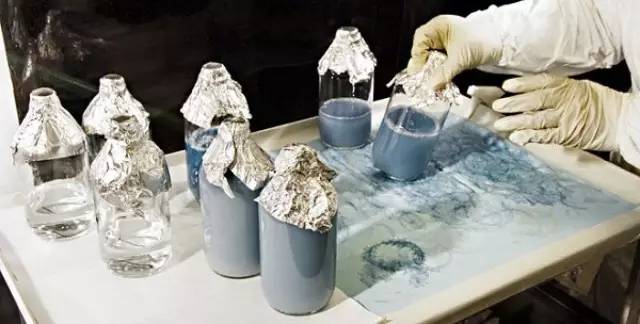
Bean knowledge: blue Limulus blood can save lives.
Horseshoe crabs have blue blood, and the reagent obtained from this blue blood ensures the medical safety of thousands of people.
when it comes to blood, the average person's first impression may be "bright red", but as you may know, red is not a common characteristic of all blood. Many crustaceans and molluscs actually have blue blood.
Why is the blood red and blue? This is because the proteins in these blood responsible for carrying oxygen contain different metal ions as the core. In the red blood we are familiar with, hemoglobin is responsible for carrying oxygen, and its core metal element is iron, while the blue blood plays a similar role in hemocyanin, and its core is copper.
Blue blood seems to be far away from people's lives, and it may be regarded more as a cold knowledge about animals, such as the following picture:
but! In fact, there is a kind of blue blood that is related to everyone's health, and that is Tachypleus amebocyte lysate.
Limulus (hou) is a strange-looking marine animal, and its blood is also very special grayish blue. But that's not the point. The point is that the horseshoe crab has a special ingredient in its blood that reacts with fungi and endotoxins and condenses a thick layer of gel around these invaders.
what's the use of this? It's quite useful. Bacterial endotoxin is a harmful substance that may remain in injectable drugs and medical products. In order to ensure the safety of users, it is necessary to test it, and Limulus amebocyte lysate can be used to effectively detect it to ensure people's medical safety. Now, this is also a common method.
As a piece to bring our elegance and romance to you, goan formal dress patterns is almost a basic need for any lady. Our flexible selections suit all body types well.
how did you get Limulus amebocyte lysate? The following picture is for reference, this is a series of pictures of producing Limulus amebocyte lysate published in Wired:
after people have captured some horseshoe crabs, they will check their physical condition and then use a special device to take blood. Horseshoe crabs will not be killed, and after taking blood, they will be released back to the sea. The grayish blue liquid in the bottle is the obtained blood, in which the deformable cells are isolated, and then the cells are destroyed to extract the coagulogen, so that the final Limulus amebocyte lysate can be obtained.
like the bright red blood of blood donors, blue blood can save lives.